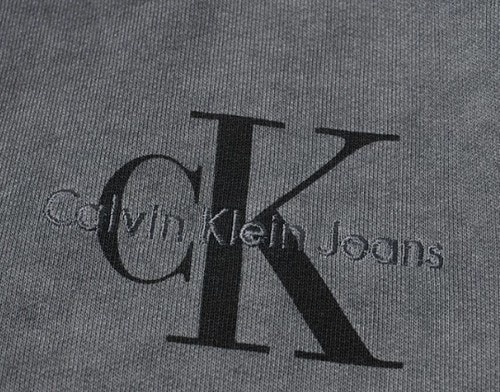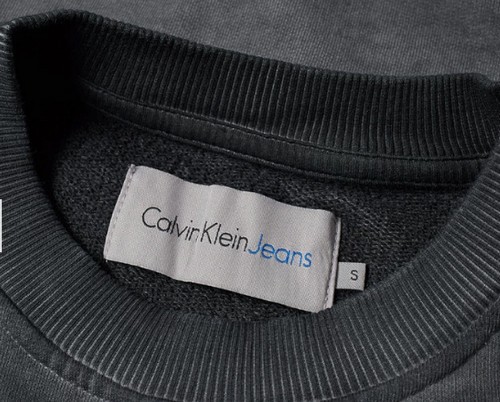American fashion house and luxury goods manufacturer established in 1968 which specialises in leather, lifestyle accessories, home furnishings, perfumery, watches and ready to wear luxury goods.
Headquartered in Midtown Manhattan, New York city the company was founded by Calvin Klein along with his friend Barry K. Schwartz before being sold to Phillips Van Heusen (PVH) in 2002.
Table of Contents
Segmentation targeting and positioning in the Marketing strategy of Calvin Klein
Calvin Klein adopts a flexible segmentation strategy as it offers a wide range of products in order to cater to a wide range of customer segments which varies among companies product lines.
Making good use of the market segmentation by utilizing customer needs with the main aim of building long-lasting relationships with its customers as well as attracting new customers. Under demographic segmentation, the brand mainly targets the upper-middle-class youth and business executives. Under psychographic segmentation, it has identified those customers who live a certain lifestyle and are fashion-centric and are not price sensitive when it comes to splurging on fashion.
The target audience for the brand is mostly the youth and has been using celebrities, bloggers and influencers as the part of the campaign “My Calvins” to influence the young adults to buy their products. The target customers are men and women between the ages of 15-30, most likely not married and the audience for the “My Calvins” campaign would be the explorers and aspirers.
The brand position itself as products that are rich and quality products designed for urban youth and high-end business executives who are trendy and are stylish but prefer a minimalistic look. Celebrity endorsement is a key factor in positioning products in the market, with Justin Bieber endorsing the underwear segment, it helped to attract young girls who are interested in making their boyfriends appear just like Justin Bieber. The brand used his immeasurable popularity and has targeted a number of customers.
Marketing mix – Click here to read the Marketing mix of Calvin Klein.
SWOT analysis – Click here to read the SWOT analysis of Calvin Klein
Mission in the Marketing strategy of Abercrombie and Fitch – “Not Available”
Vision in the Marketing strategy of Calvin Klein- “Become one of the first choices of consumers”.
Competitive advantage –
Presence in multiple fashion domains serves as a huge advantage for the brand which mainly offers products in the segment ready to wear fashionable clothes for men and women.
In addendum, they also offer perfumes and accessories such as watches, eyewear, shoes and jewellery for both men and women.
Major competitors for the brand includes brands like: Tommy Hilfiger, Ralph Lauren, Jockey, Hugo Boss, Donna Karen, Giorgio Armani
It remains ahead of its competitors in the terms of licenses, CK uses “licensing” to distribute products in the world. It has broadly two segments -Calvin Klein Apparel which looks after its sales of the product line in both men and women’s wear providing the company a 60% of its earnings, other is Calvin Klein licensing which takes care of its licensing agreement with third parties.
BCG matrix in the Marketing strategy of Calvin Klein –
Calvin Klein as the brand when plotted on the BCG Matrix of retail industry features in the question mark segment. The reason being the pricing of other brands like Levi’s, Tommy Hilfiger, US Polo, Puma etc. is economical thus is more preferred among customers. The company will have to work on its pricing and ultimately marketing strategy especially in the country like India to stay ahead of the competition.
1) Distribution in the Marketing strategy of Calvin Klein –
As the brand over the years has expanded across the geographies and distribution channels, it has simultaneously invested in developing an efficient supply chain taking care of its business needs.
With brand’s capabilities for worldwide procurement along with an extensive established network of worldwide sourcing partners enabling it to deliver to its customers’ needs in an efficient manner without relying on any one vendor or factory in any one country.
In the first half of 2017 through a joint venture with Arvind Limited brand made its supply chain even more dynamic and robust. This manufacturing unit in Ethiopia helps the brand to produce products at a cost advantage, which are also being sold in The United States under its heritage brand.
2) Brand equity –
With all the advisement and campaigns, the brand is perceived as a global lifestyle brand that exemplifies bold and progressive ideals with the seductive and minimalistic aesthetic.
The brand’s image is kept consistent through the brands distinctive marketing identity and strategy. People with intimate, modern, iconic and classic lifestyle imagery gets attracted to the brand. The brand describes itself as the honest, authentic and genuine brand. With continuous success since 1968, the customers view CK as a reliable fashion brand which is minimalistic and classic.
The brand’s unique selling point is their comfortable but sexy products using innovative fabrics of remarkable quality.
Marketing analysis in the Marketing strategy of Calvin Klein –
Recent research by HTF market Intelligence consulting Ltd. Suggests the in womenswear segment Calvin Klein would have a share of 17% behind only to Givenchy, Dolce Gabbana, Gucci and Burberry.
Both of PVH’s brand Calvin Klein and Tommy Hilfiger has continued to show growth over the years and has been with the company stating that around 60% of the companies earnings coming from the foreign market.
Customer analysis of Calvin Klein
Customers of Calvin Klein mostly consist of the younger generation in particular men and women between the age of 15-40. Individuals with high relatively high disposable income and the ones more conscious about the fashion and trends constitute the major chunk of customers for the brand.
Promotion strategy of Calvin Klein
In 2015, around $320 million was spent globally in connection with the advertisement, marketing and promotion of Calvin Klein brands.
With the Kardashians and Jenners family featuring in the “MyCalvins” campaign, it created a strong message highlighting the importance of family. With Justin Bieber endorsing the underwear segment helped to attract the young customers.
With the #IAMWOMEN campaign, the brand talks about women empowerment and has introduced perfume ranges, drawing inspiration from the multifaceted identity of feminity with aspirational women around the world endorsing the brand.
It also performs direct marketing by allowing consumers to sign up to the brand’s newsletter which sends them emails informing them about the brand and their promotional offers, thus ensuring consistent communication to improve the brand loyalty.
There are more than 446,029 photos on Instagram with the tag #mycalvinsand found more than 4.5 million interaction. The campaign was then displayed on billboards on prints, Ck stores etc. On the Calvin Klein website, there is a #mycalvins gallery which encourages customers to upload the photo of themselves in the social media and get a chance to be featured on their website.
The fact that the campaign has captured the desired target audience using their customers without any cost, causes it to be so successful.
Liked this post? Check out the complete series on Strategies

